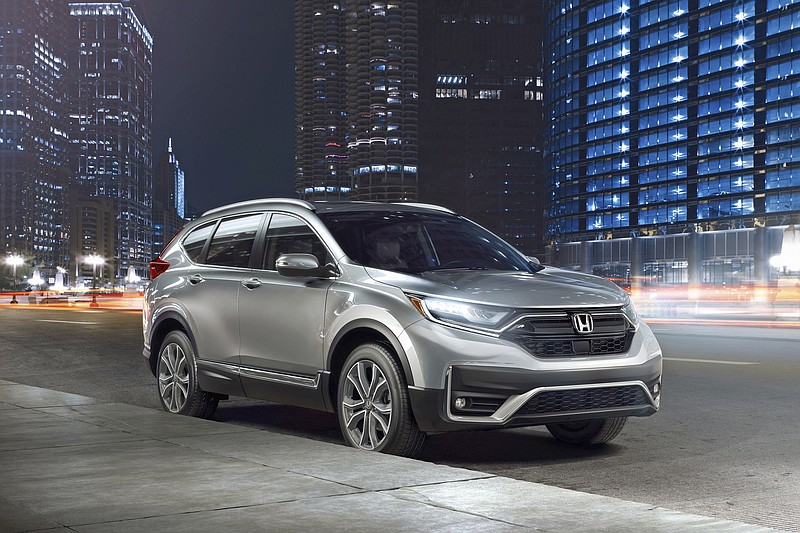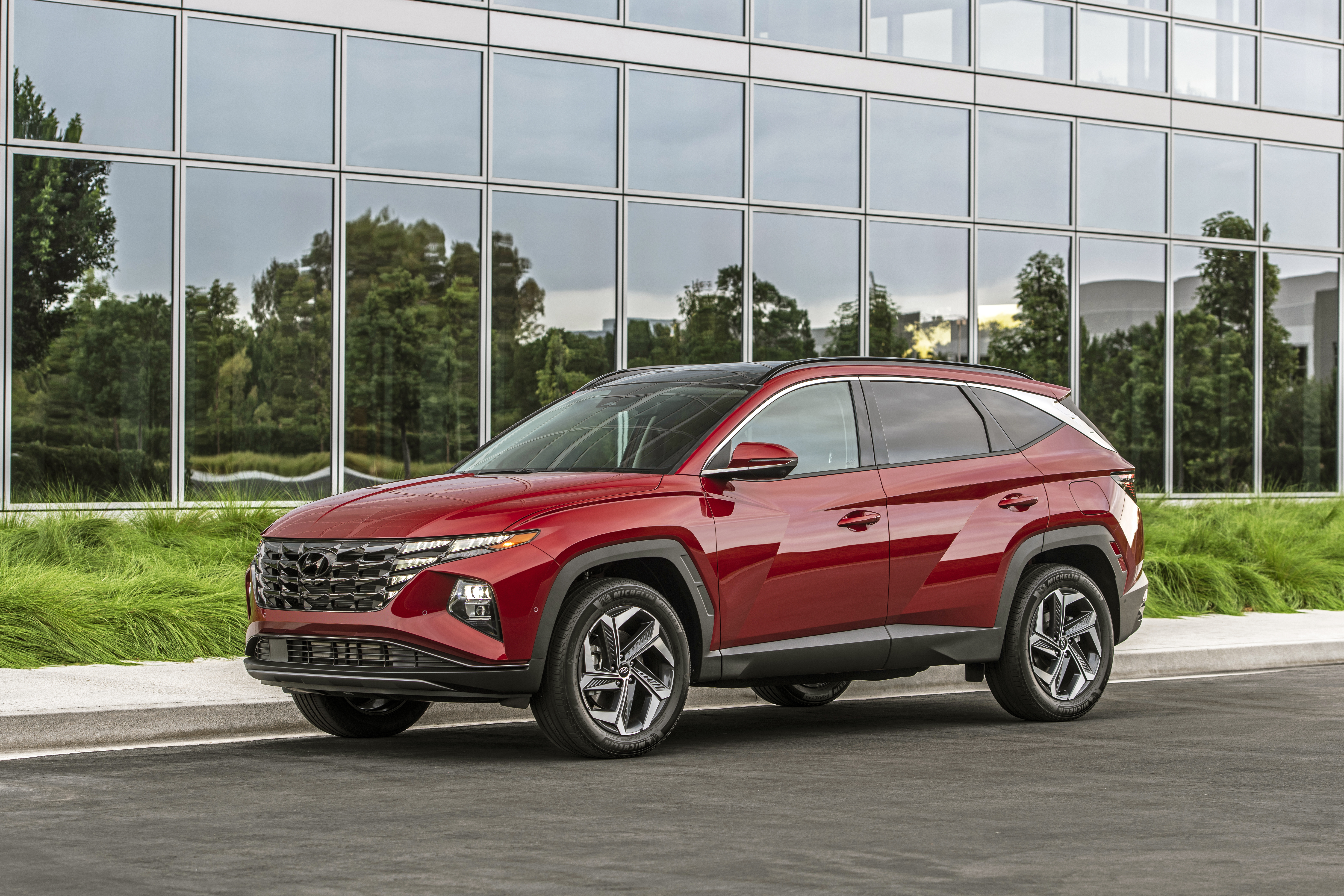For years, the Honda CR-V has been one of the most appealing small crossover SUVs on the market. It boasts a smooth ride, enjoyable acceleration and handling, and lots of passenger and cargo space. However, Honda introduced this latest CR-V generation back for the 2017 model year and hasn't significantly updated it since. And that has opened the door for newer rivals to challenge its reign.
One of those hopefuls is the redesigned 2022 Hyundai Tucson. Some of its highlights include distinctive new styling and an impressive list of standard and available features. The experts at Edmunds examine both to determine whether the overhauled Tucson has what it takes to dethrone the 2022 CR-V.
COMFORT AND INTERIOR
First and foremost, a small crossover SUV must be practical. They are inherently smaller than midsize SUVs, so maximizing the amount of room is paramount. Both the CR-V and Tucson have a greater amount of passenger headroom and legroom than you might expect, allowing 6-foot-tall occupants to fit with ease. From an ergonomics perspective, primary controls in both vehicles are within the driver's reach.
SUVs should also transport passengers in comfort, and both of these superlative crossovers abide. They each feature cushy seats that conform to most body types as well as a ride that glides over even rougher road surfaces. Exterior noise doesn't seep into the cabin much in either vehicle.
Winner: Tie
UTILITY
As with passenger room, cargo capacity can sometimes be at a premium in a small SUV. Thankfully, the Honda CR-V and Hyundai Tucson have some of the largest cargo areas in the class. Most versions of the CR-V offer 39.2 cubic feet of storage behind the rear seats, just slightly more than the Tucson's 38.7 cubic feet. Lower the rear seats, and the CR-V gives you 75.8 cubic feet and the Tucson offers 74.8 cubic feet.
The CR-V does gain a slight edge when you consider storage inside the cabin. The Hyundai offers numerous small cubbies throughout the cabin in which you can place water bottles, a phone and other small items. But the Honda's bins are a bit larger and more useful. In particular, it has a sizable storage area under the armrest that features a sliding divider.
Winner: Honda CR-V
TECHNOLOGY
The CR-V's age is most apparent in its technology package. The 7-inch touchscreen is slow to respond to user inputs, and the interface itself is crammed with small virtual buttons that can be distracting to push when driving. By contrast, the Tucson's standard 8-inch screen is more responsive. But its optional 10.25-inch screen does present some usability issues because the touchscreen and climate control panel feature no physical buttons. Both vehicles' touchscreen interfaces require quite a bit of familiarization before they're easy to operate.
Both SUVs come with a similar number of advanced driving aids as standard, such as forward collision warning and lane keeping assist, which steers the vehicle back into its lane if it begins to drift over the lane marker. While the Tucson's best features are reserved for models in upper trims, overall it offers a wider range of safety systems than the CR-V. The Tucson's driving aids also feel more natural in their operation than the CR-V's, which can be overly abrupt and sensitive.
Winner: Tucson
PERFORMANCE
The Honda and Hyundai are both powered by four-cylinder engines and produce nearly identical levels of power. But the CR-V's turbocharged engine develops peak torque earlier in the rev range, and the continuously variable automatic transmission keeps it in the sweet spot more easily. These two aspects explain why in Edmunds' testing an all-wheel-drive CR-V accelerated from 0 to 60 mph in 8.3 seconds compared to an all-wheel-drive Tucson at 10.2 seconds to 60 mph. The CR-V's steering and handling are also a bit sharper, making this family-friendly crossover a little more enjoyable to drive.
Winner: CR-V
VALUE
Value has always been a Hyundai strong suit, and the Tucson is no different. The Hyundai's starting price is a bit lower, but it also comes with a stronger set of standard features. The base Tucson - $26,175, including destination charges - comes with a touchscreen, a six-speaker audio system, and wireless Apple CarPlay and Android Auto smartphone connectivity. You have to upgrade to the CR-V Special Edition at $28,175 for any of these, and the Honda doesn't have wireless smartphone connectivity at all.
In their fully loaded forms, the Tucson is a little more expensive than a comparable CR-V - $37,425 for the Hyundai versus $36,775 for the Honda - but comes with more features.
Winner: Tucson
EDMUNDS SAYS: The 2022 Honda CR-V and 2022 Hyundai Tucson are both excellent choices. It's a close match, but we think the CR-V's superior driving dynamics and more thoughtful storage are worth paying a little extra for.
___
This story was provided to The Associated Press by the automotive website Edmunds. Follow Cameron Rogers, senior news editor at Edmunds, on Twitter.
RELATED LINKS
Edmunds 2022 reviews: Hyundai Tucson; Honda CR-V; Best Small SUVs.

